Expert's Rating
Pros
- Wireless charging
- Premium design
- Powerful A11 Bionic chipset
- TrueTone display
- Impressive low-light performance
Cons
- Same design for fourth year in a row
- Only available in three colours
- Misses out on Portrait Mode effects
Our Verdict
Back in 2017, the iPhone 8 was a brilliant smartphone. It might be the cheapest smartphone that Apple sells now but we wouldn’t recommend it any longer unless you’re really on a tight budget. The iPhone XR is a better balance of value and features.
Price When Reviewed
64GB $449 | 128GB $499
Despite being launched in 2017, the iPhone 8 is still part of Apple’s official smartphone line-up. It might look like a bargain compared to the latest models, but should you really buy it?
The iPhone 8 was an incremental update to the hugely popular iPhone 7, adding wireless charging and improved camera tech. Two years on it’s still available to buy from Apple and various stockists, but how does it measure up to the current market? Here’s our updated review of the iPhone 8.
iPhone history
This iPhone has been replaced with a newer model. Find links below to our reviews of all iPhone models, including the latest generation. iPhone 16 is expected to launch in September 2024 (see when is the best time to buy a new iPhone), while iPhone SE (4th generation) and iPhone 17 are likely to appear in 2025. Find out about Apple’s September event details and how to watch the Apple September event live stream; or for other Apple products, learn more about all the new Apple products coming this year and when is the next Apple event. You might also like our iPhone buying guide, best iPhone deals and comparison of every iPhone that is available to buy today.
- Original iPhone (2007) review
- iPhone 3G (2008) review
- iPhone 3GS (2009) review
- iPhone 4 (2010) review
- iPhone 4s (2011) review
- iPhone 5 (2012) review
- iPhone 5c (2013) review
- iPhone 5s (2013) review
- iPhone 6 (2014) review
- iPhone 6 Plus (2014) review
- iPhone 6s (2015) review
- iPhone 6s Plus (2015) review
- iPhone SE (1st generation; 2016) review
- iPhone 7 (2016) review
- iPhone 7 Plus (2016) review
- iPhone 8 (2017) review
- iPhone 8 Plus (2017) review
- iPhone X (2017) review
- iPhone XR (2018) review
- iPhone XS (2018) review
- iPhone XS Max (2018) review
- iPhone 11 (2019) review
- iPhone 11 Pro (2019) review
- iPhone 11 Pro Max (2019) review
- iPhone SE (2nd generation; 2020) review
- iPhone 12 (2020) review
- iPhone 12 Mini (2020) review
- iPhone 12 Pro (2020) review
- iPhone 12 Pro Max (2020) review
- iPhone 13 (2021) review
- iPhone 13 mini (2021) review
- iPhone 13 Pro (2021) review
- iPhone 13 Pro Max (2021) review
- iPhone SE (3rd generation; 2022) review
- iPhone 14 (2022) review
- iPhone 14 Plus (2022) review
- iPhone 14 Pro (2022) review
- iPhone 14 Pro Max (2022) review
- iPhone 15 (2023) review
- iPhone 15 Plus (2023) review
- iPhone 15 Pro (2023) review
- iPhone 15 Pro Max (2023) review
UK pricing and availability
Despite being rather old, Apple is still selling the iPhone 8 as part of its smartphone line-up. It’s now the cheapest iPhone you can buy from the official store.
It’s just £479/$449 for the base 65GB model and £529/$499 if you want to jump to 128GB. If you’re looking for a newer iPhone that’s affordable, the iPhone iPhone XR has now dropped to £629/$599.
This is the iPhone 8’s lowest ever price following the iPhone 11 launch.
You can buy the iPhone 8 directly from Apple or networks including EE, Vodafone, O2 and Three. Find the lowest prices in our roundup of the best iPhone 8 deals.
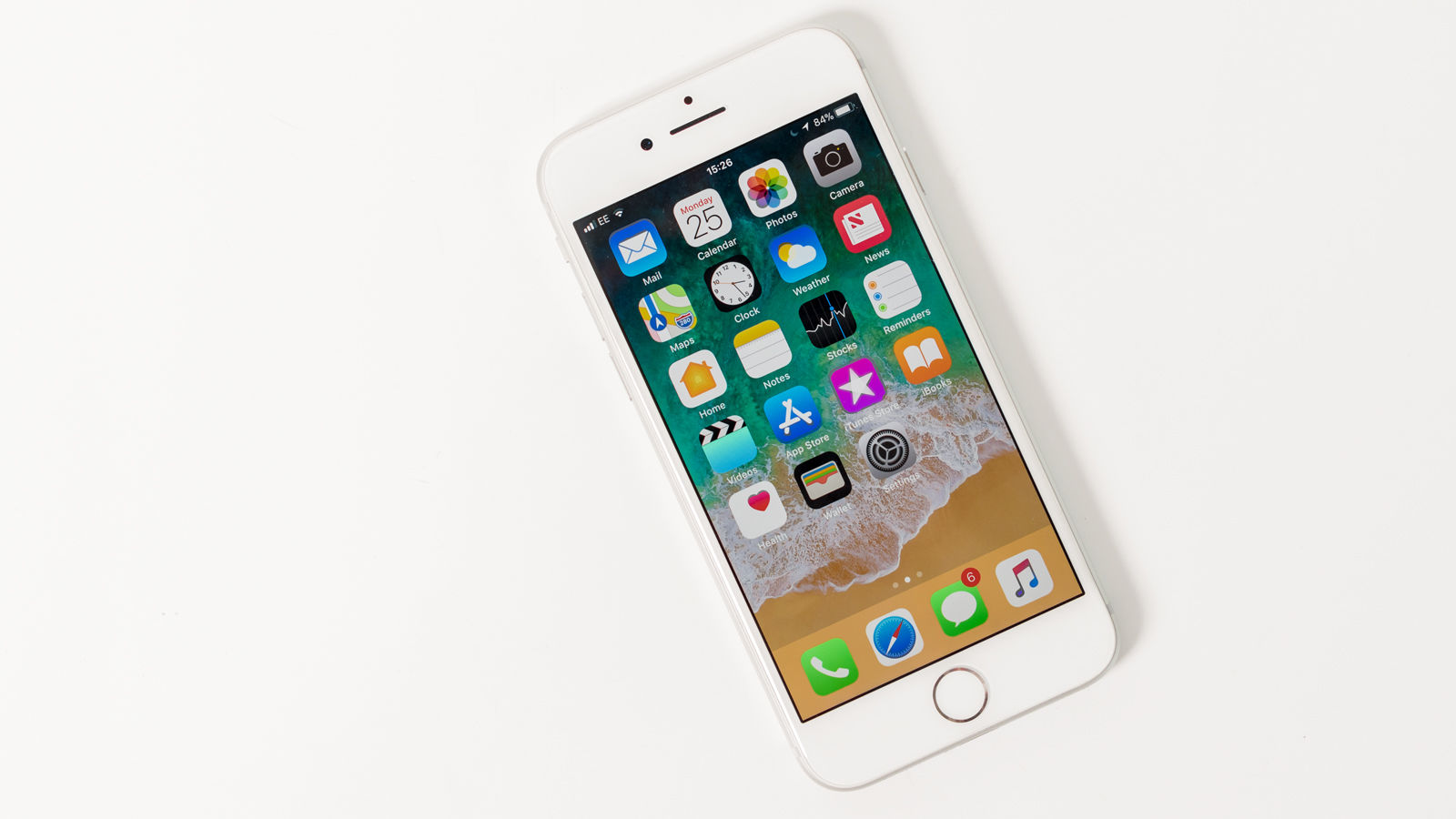
Design and build
The iPhone 8 sports a similar form factor to the iPhone 7 (and 6s, and 6) but with a handful of changes. So, while it’s slightly thicker than the iPhone 7 at 138.4 x 67.3 x 7.3mm and 10g heavier at 148g, there’s a reason why.
Much of the added bulk can be attributed to the introduction of a glass rear, much like the design of the iPhone 4 and 4s. It provides the smartphone with a much more premium look when compared to aluminium, but you may be worried about how easily it’ll shatter.
Apple claims the glass is custom-made with a “50 percent deeper strengthening layer”, although we’re not sure what this is compared to as the previous iPhone boasted an aluminium unibody. There’s also the introduction of a steel substructure alongside the 7000 Series aluminium band to provide extra frame reinforcement.
It won’t protect against all drops, but it should hopefully stop it shattering from less significant drops. And those with an iPhone 7 will be happy to know that most, if not all existing cases should fit the iPhone 8 too, ideal for those that worry about dropping the smartphone.
MobileFun, which kindly provided us with an iPhone 8 sample, stocks a range of iPhone 8 cases and iPhone 8 Plus cases. We’ve also rounded up some of the best in our guide to the best iPhone 8 cases.
The glass, like the aluminium unibody it replaces, is gently curved at the edges to provide a comfortable, snug fit in the hand. Contrary to what many may believe, the blend of glass and aluminium actually makes the smartphone easier to grip, along with offering a high-end look and wireless charging capabilities.
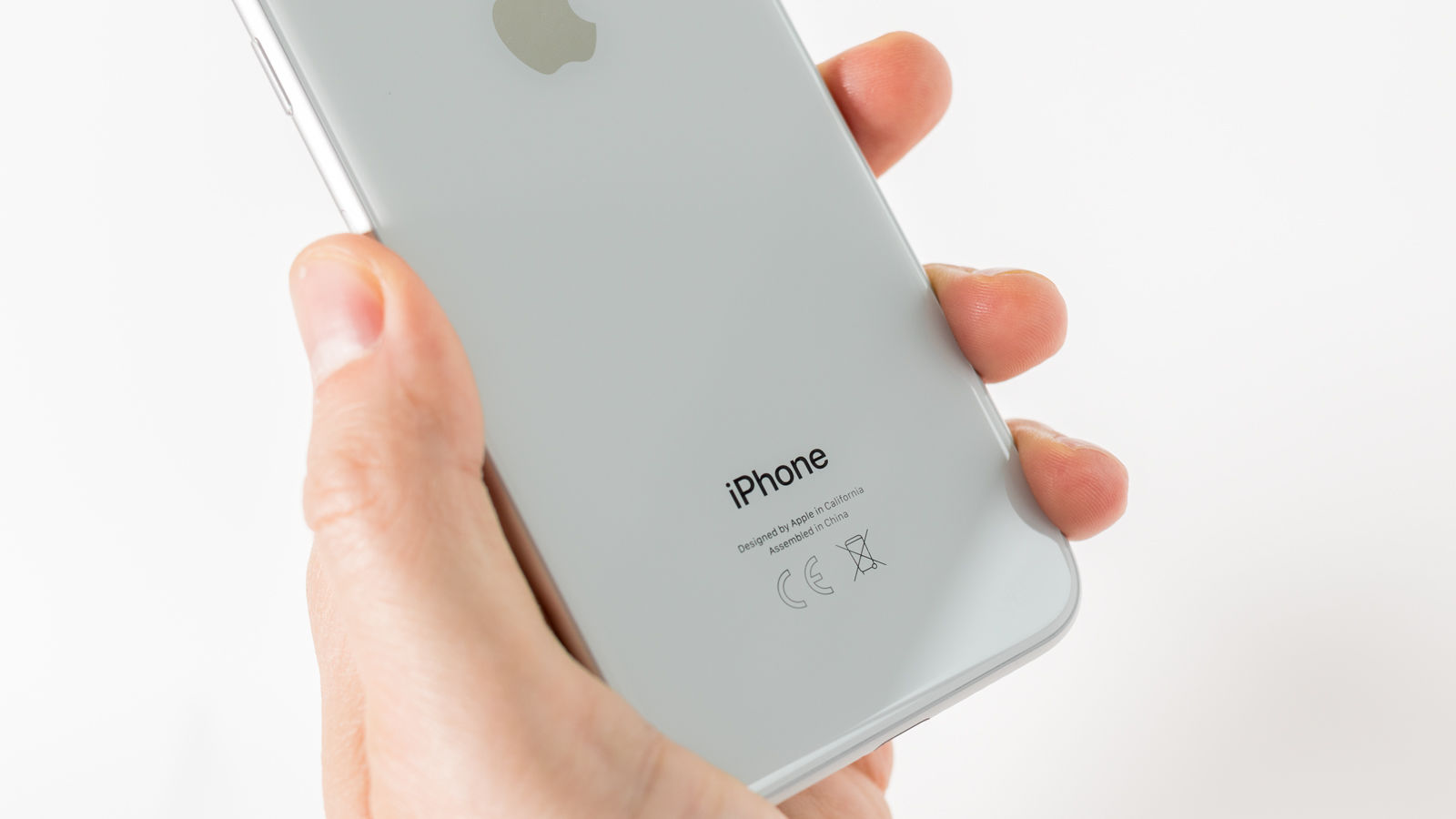
The iPhone 8 also boasts a ‘cleaner’ look when compared to previous iterations of iPhone, as it has removed much of text from the lower-back of the smartphone. It still says iPhone, Designed in California and Assembled in China (plus the CE marks for European buyers) but markings including the item number are nowhere to be seen.
There’s also redesigned stereo speakers present on the iPhone 8, boasting a 25 percent boost in volume compared to the iPhone 7, along with deeper bass. It brings it in line with the stereo-equipped iPhone 7 Plus and later, and brings many benefits including a forward-facing speaker for clearer audio when watching videos on your smartphone.
Along with general sound improvements, Apple has been making strides in augmented reality and spatial audio, with the new stereo speakers helping to enhance the AR experience on iOS.
There’s also a difference when it comes to the available colour options. While the iPhone 7 was available in a range of colours, the iPhone 8 is limited to three: Gold, Silver and Space Grey, although the Silver variant boasts a white front and rear with a silver band (which, in our opinion, looks absolutely stunning).
These are different shades than those available in the past though, thanks to the glass rear of the iPhone. It boasts a six-layer ink process that allows for a rich depth of colour present on all models of the iPhone 8, complimented by a colour-matched aluminium band that runs along the sides.
Oh, and the solid-state Home button first introduced on the iPhone 6s is still present on the iPhone 8, unlike with the iPhone X, XS and so on. And those hoping that Apple would revert the decision to remove the headphone jack will be disappointed, as it’s unfortunately not the case.
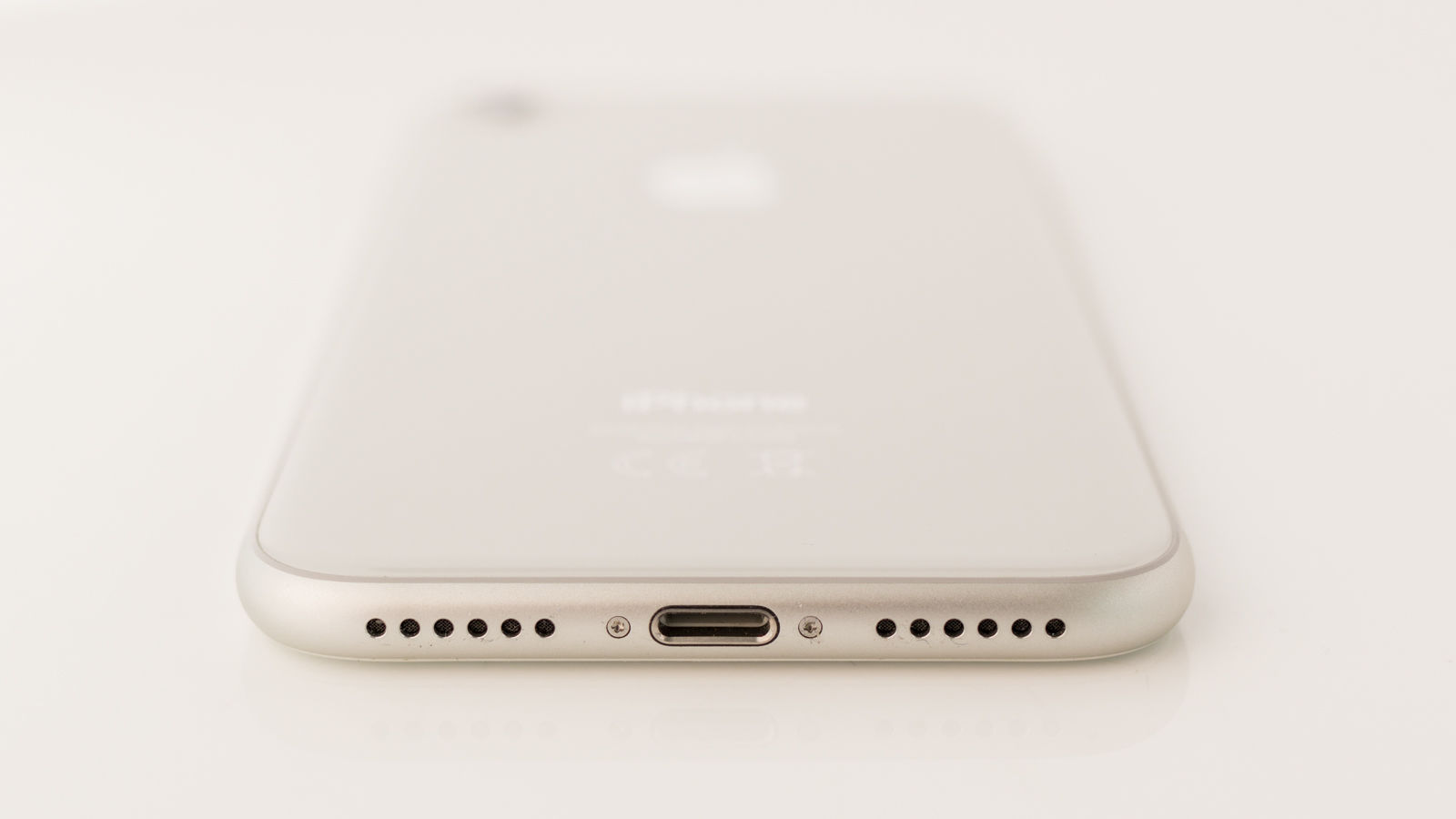
Features and spec
When the iPhone 8 launched it marked more of an all-round improvement to the smartphone, rather than one killer feature.
Display
Let’s start with the display: it’s still a 4.7in Retina HD display (far larger screens are now available on the XR, XS and XS Max) with a sub-FHD 1334 x 750 resolution, but it features True Tone technology unlike the iPhones before it. First introduced on the iPad Pro 9.7in in 2016, True Tone technology allows your iPhone to detect the ambient light in your settings and adjust the white balance of the display accordingly, to help provide a better and more comfortable viewing experience.
The effect is immediately noticeable when looking at the smartphone, especially when under an off-white light like those in our office. The display picked up on the light levels and made the display warmer and thus, easier on the eyes.
It’s a bit like Night Shift (we compare True Tone and Night Shift here), but much more subtle and reactive based on your environment – only those that purposely look for the change in hue will notice it, but the benefits to eye strain will be universal.
In addition to the True Tone display tech, the iPhone 8 display features a wider colour gamut for better colour reproduction, and dual-domain pixels for wider viewing angles. Of course, it also features the likes of 3D Touch and an oleophobic coating to resist smudges from your grubby mitts.
All this equates to an impressively crisp, detailed and vibrant display, despite the sub-par resolution. While Apple’s sub-FHD display provides better battery life and an improved graphical experience, many similarly-priced Androids boast at least a FHD display, if not something greater.
We’re not asking for a 4K display, but at least bump it up to Full HD so we can enjoy watching Netflix at native 1080p.
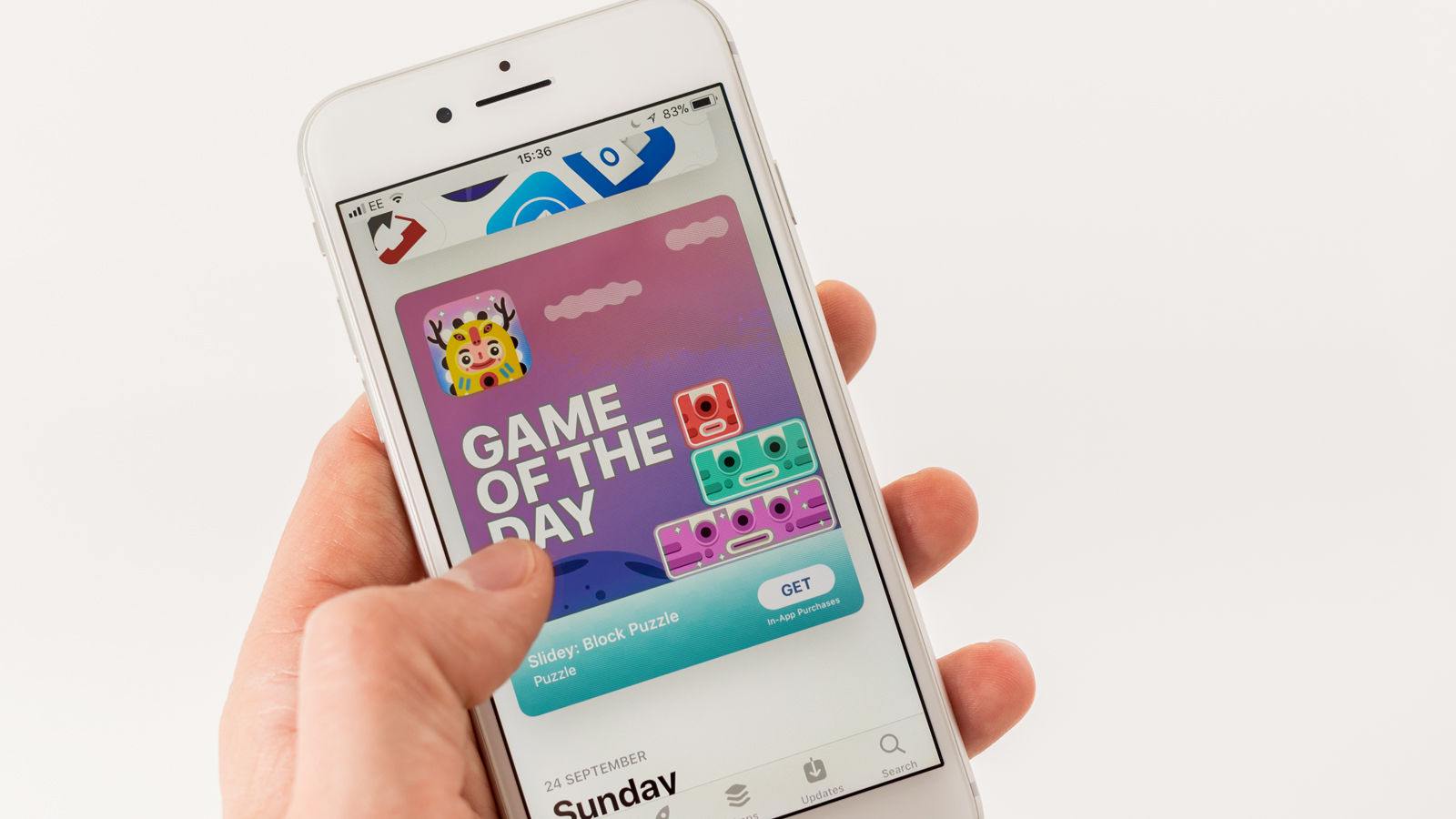
Processor
Moving beyond the display, at launch the iPhone 8 featured the most powerful mobile chipset designed by Apple to date.
The A11 Bionic chipset provided impressive gains in the performance department – but much more than that, too. It can also help power high-end AR experiences, and the ‘neural engine’ can help process over 600 billion operations per second.
When translated to real-life usage, at launch the iPhone 8’s A11 Bionic chipset was probably the most powerful mobile chipset available on a smartphone, as is shown in our benchmarks below.
It can still handle anything, from high-end 3D games to augmented reality experiences rendered in real time, without even the smallest bit of lag. But note that the A12 Bionic chip in the iPhone XS is faster still.
The A11 Bionic chipset also features a second-generation Apple-designed performance controller that helps to provide great performance when playing games and using power-hungry apps without using too much battery power. It won’t make your iPhone last for days on end, but it lasts a bit longer during intense gaming sessions.
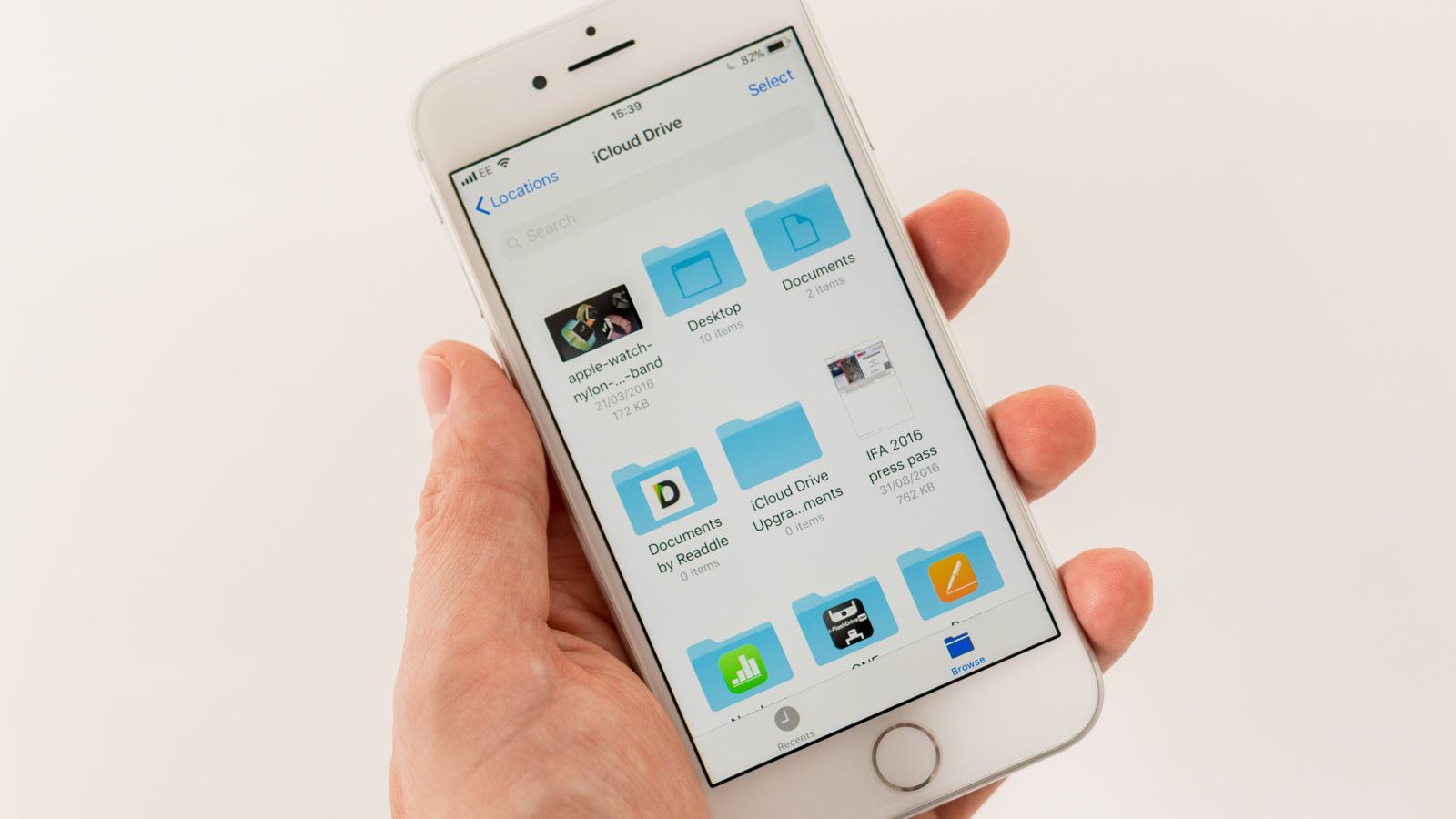
Benchmark results
The power of the A11 Bionic baked inside the iPhone 8 was backed up by our benchmark results, which at launch were some of the best we’d ever seen from a smartphone – especially with regards to the Geekbench 4 score.
We performed several tests, with a higher number indicating a better score for each: Geekbench 4, GFXBench OpenGL, GFXBench Metal and JetStream.
Let’s start with Geekbench 4, which measures the power of the A11 Bionic’s CPU and is a good indicator of the general power of the smartphone. The iPhone 8 scored a whopping 4271 and 10438 in single- and multi-core tests, leaving the likes of the Samsung Galaxy S8 (2017, 6466), Note 8 (2014, 6822) and OnePlus 5 (1955, 6726) in the dust.
These were the highest scores we’d seen in any smartphone to date – but obviously these have since been surpassed by the XS generation of phones.
Next, we ran GFXBench OpenGL, the graphical benchmark available for iOS and Android, allowing us to compare performance when gaming with competing flagship devices. We ran two tests in GFXBench OpenGL: T-Rex and Manhattan.
Rather unsurprisingly, Apple’s iPhone 8 got the perfect 60fps score in both, compared to 60- and 55fps from the Galaxy Note 8, 60- and 54fps from the Galaxy S8 and 59- and 55fps from the OnePlus 5.
Some may argue that it’s affected by the sub-FHD display of the iPhone 8, as the likes of the S8 and Note 8 have incredibly high resolution displays to power, and while may be is true, the results remain the same.
We also ran the same tests in GFXBench Metal to compare graphical performance when utilising Apple’s Metal API built into iOS and used by iOS game devs. The scores were much more impressive this time around, as the iPhone 8 scored 119- and 100fps respectively in T-Rex and Manhattan, compared to 60fps across each on 2016’s iPhone 7.
Lastly, we ran JetStream, a benchmark that tests the speed of the mobile browser.
In the case of the iPhone 8, that’s Safari, arguably the best mobile browser on the market. It seems to be backed up by our benchmark results too, as it knocked the iPhone 7 Plus (168.7) off the top spot with an incredibly score of 228. It’s blisteringly fast compared to Google Chrome on the Galaxy S8 (54.9), Note 8 (49.6) and OnePlus 5 (71) too.
For a better understanding of these benchmarks, take a look at the infographic below:
Battery life and wireless charging
After years of fans asking the company to offer wireless charging on the iPhone, Apple finally complied, and announced that (in un-Apple fashion) it’d be compatible with Qi-certified wireless chargers.
That’s right: there’s no proprietary system like with the Apple Watch, meaning it’s compatible with the millions of Qi wireless chargers found around the world, from public places like McDonalds and Starbucks to those that you can buy online for use at home.
With that being said, Apple was due to release its own wireless charging mat dubbed AirPower with advanced wireless charging tech not offered by competitors, but it’s now cancelled that project.
At launch wireless charging was limited to 5W, which meant that although it could be used with more powerful Qi chargers, but it won’t charge the smartphone any faster.
Apple later upgraded the iPhone 8 and 8 Plus to ‘fast wireless charging’ via a software update in iOS 11.2, but that bumped it up only to 7.5W. In comparison, some Android smartphones can charge at double that speed, 15W.
The iPhone 8 features a 1,821mAh battery that is actually over 7 percent smaller than the battery found in the iPhone 7, which would leave many to believe that the iPhone 8 is worse off in the battery department.
Somewhat surprisingly, Apple’s second-generation performance controller seems to work very well – the iPhone won’t last days on a single charge, but we’ve found the iPhone 8 to last all day with average use.
And besides, with the addition of wireless charging it’s easier than ever to put your phone in a wireless charging cradle when at work or at home to top up the battery.
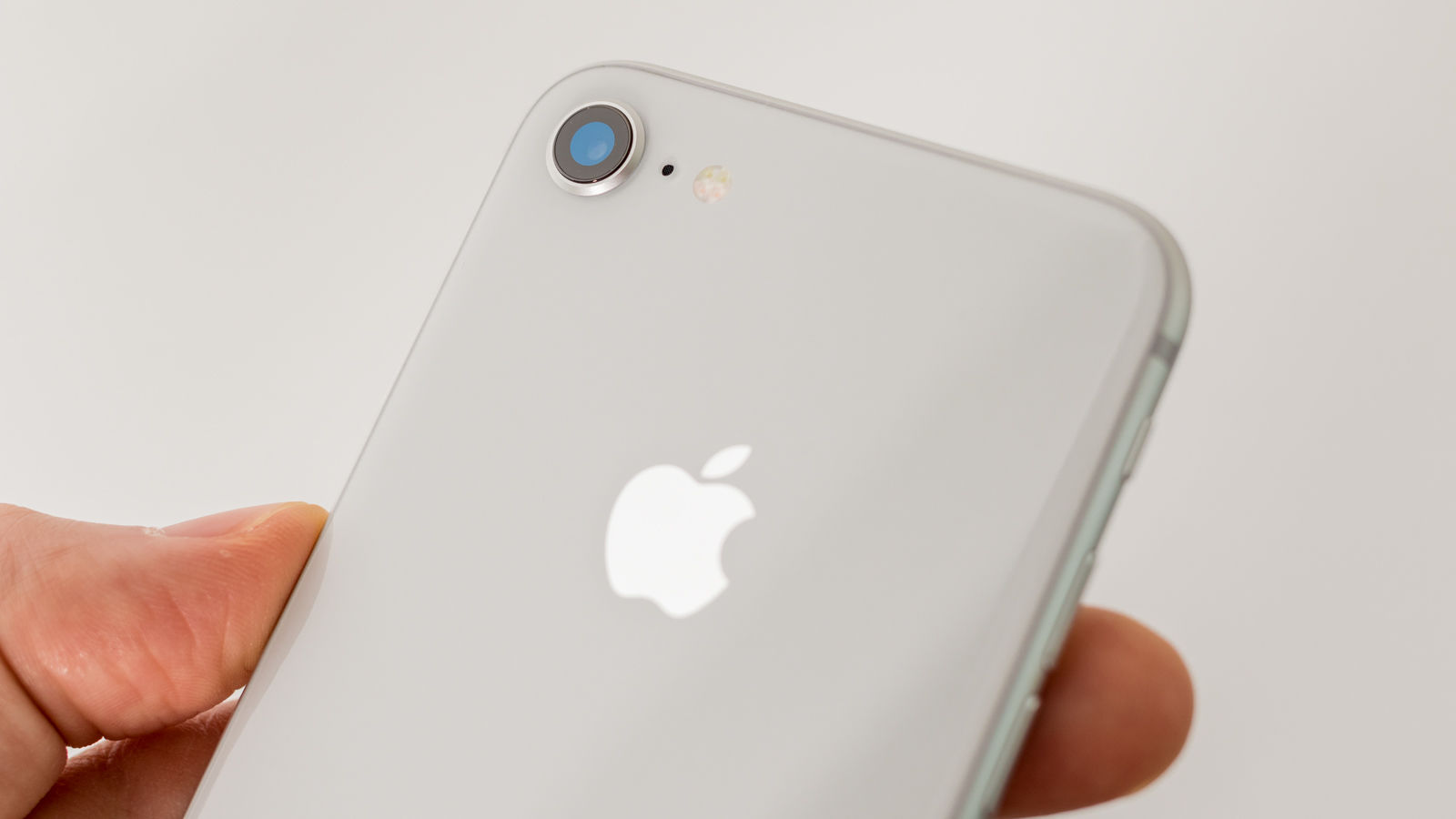
Cameras and photography
The camera has had a bump in spec too, although it’s not ground-breaking. The iPhone 8 features a single rear-facing 12Mp camera that features a larger, faster processor that provides zero shutter lag and performs better in low-light conditions.
There’s also a new colour filter in the lens, along with ‘deeper pixels’ and Optical Image Stabilisation (OIS) for both photo and video.
What does that mean to you at home? The iPhone 8 takes amazingly detailed photos and performs incredibly well in low-light conditions. Take a look at the following images (click to see original image):

The above photo of St. Pancras hotel is detailed and crisp with great colour reproduction on the surface, but how does it stand up when you zoom in to 100 percent? While the photo loses a bit of the definition that you see when looking at the overall photo, small details like the text on road signs and the individual bricks of the hotel are still readable, although the noise cancellation is much more apparent with an overly ‘soft’ look.
While natural light can help make a photo look better, you should also be wary about it being too bright. The sunny side of St. Pancras is a good example of this – when zooming in, you may notice that the bricks of St. Pancras are almost blown out in places. This may be fixed by using HDR, though, although it’ll depend on the scene.

The iPhone 8’s almost-instant shutter really comes in handy in terms of macro photography. Once you’ve found the perfect focus, the image is captured instantly – no need to worry about your hand moving slightly and losing the focus.
However, like most other smartphones, it’s hard to get the focus just right with macro photography on the iPhone 8. Take a look at the above – the iPhone focused on a handful of leaves instead of the bush as a whole, despite us tapping the bush several times before capturing. So while macro photography is available on the iPhone 8, it might take a few tries before getting the perfect shot.
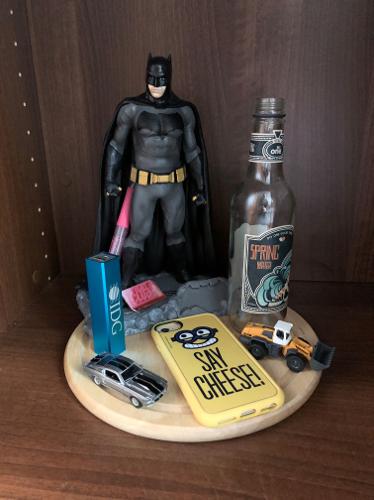
It’s in the low-light photography department that the improvements in the iPhone 8 camera are most noticeable. Take a look at the above photo in our dedicated low-light area (aka a cupboard) and how well-lit the photo looks. You’re able to make out clearly defined edges, even on Batman’s dark cape, and make out the writing on the water bottle and the pink rubber.
There’s also a surprising lack of noticeable noise cancellation, an unwanted part of much low-light mobile photography. While it won’t capture perfect snaps in pitch black darkness, it should make photos in bars and other dark places much better.
Apple said that the iPhone 8 camera had been designed specifically for use with AR. While Apple’s ARKit is compatible with a range of iOS devices, the camera featured on the iPhone 8 (along with the 8 Plus and X) apparently offers superior tracking capabilities, providing high quality AR experiences on iOS.
While it’s hard to put this to the test, we must admit that AR experiences on the iPhone 8 seemed more stable than those on the iPhone 7 Plus, although both devices provide a more-than-satisfactory augmented reality experience for those interested.
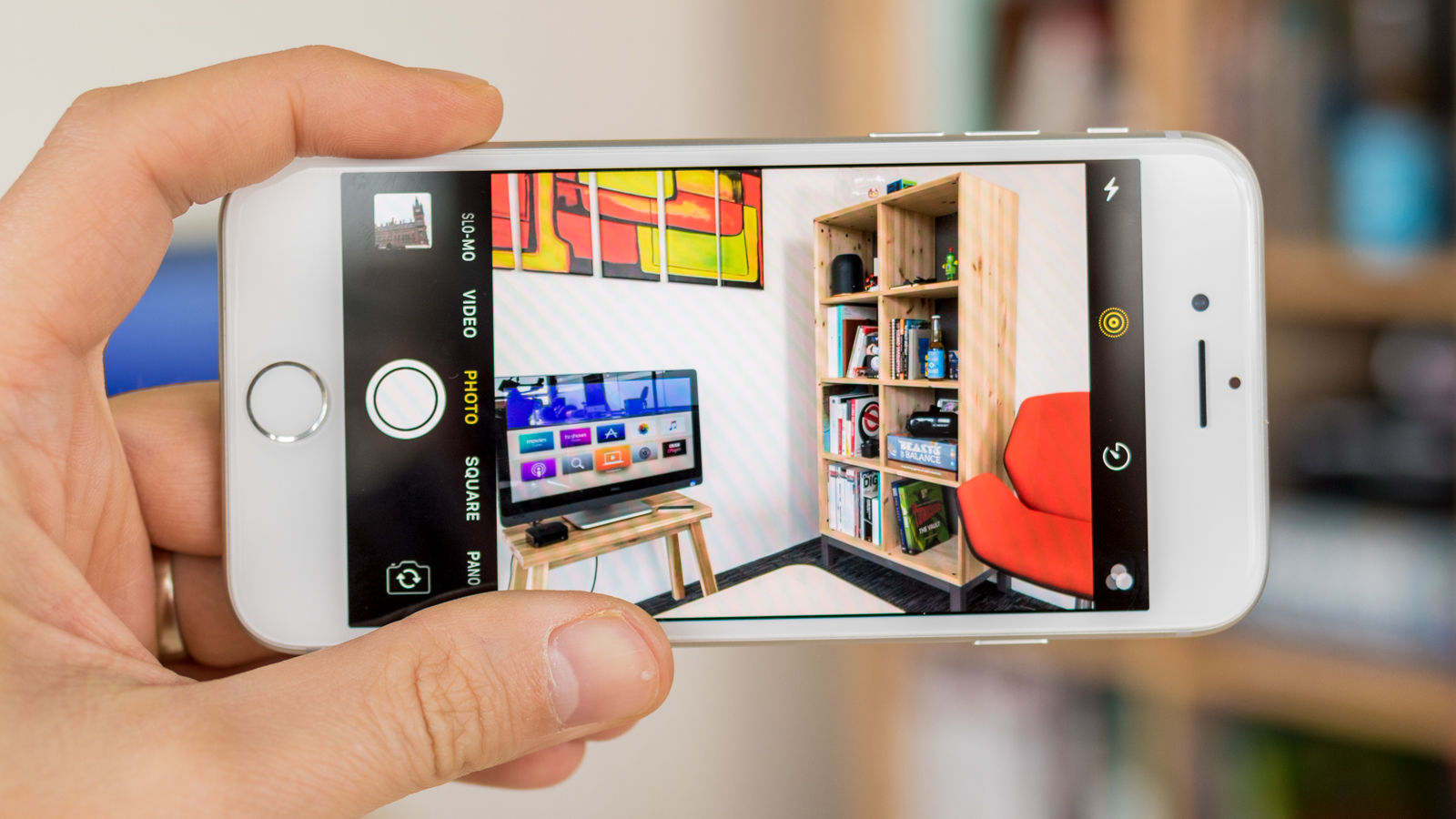
Moving beyond photography, there’s also an upgrade in the video department: the iPhone 8 is the first smartphone to be able to record 4K@60fps, an impressive feat. It has also upped the quality of the slo-mo mode, now offering 1080p@240fps, up from 120fps on the iPhone 7.
There’s a catch, though. The two new formats are only compatible with the HEVC codec introduced in iOS 11 as the files are incredibly large (400MB for a minute of 4K@60fps footage, compared to 170MB for a minute of 4K@30fps). While this might not sound like an issue to some, the codec isn’t supported by all devices or apps, meaning your friends might not be able to watch your amazingly smooth and detailed 4K@60fps video.
You can convert to the standard file type when importing videos on Mac, but only those running macOS High Sierra or newer. It’s a bit of a headache if you run into compatibility issues, so we’d recommend sticking to 4K@30fps unless you really need the high-end 4K recording.
In terms of the front-facing camera, it doesn’t seem like anything has changed: the iPhone 8 features the same 7Mp camera with f2.2 aperture as its predecessor, and is more than enough for the likes of Snapchat and FaceTime. Those looking for an upgraded front-facing camera should opt for the iPhone 8 Plus or iPhone X, as both offer front-facing portrait mode capabilities.
Verdict
The iPhone 8 is an attractive, sleek smartphone. Back in 2017 the A11 Bionic chipset provided the highest benchmark scores we’d ever seen, leaving Android rivals in the dirt, and the low-light camera performance was a marked improvement on the iPhone 7. The addition of wireless charging was also welcome.
In the current market, the iPhone 8 is somehow still on sale as the cheapest model available from Apple. However, we’d recommend getting the much better iPhone XR if you can afford the difference.

